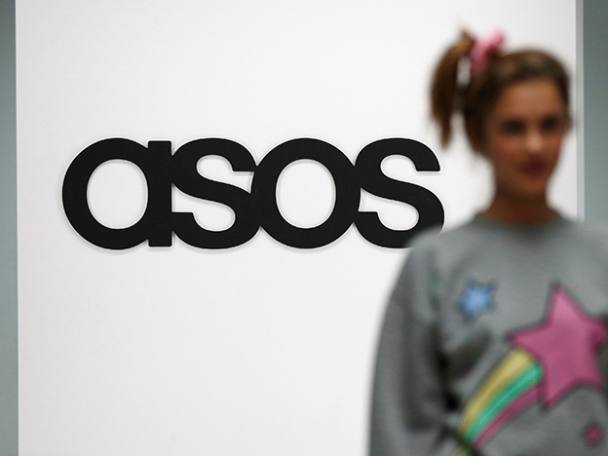ASOS reports a sales dip for the quarter yet maintains a clear path on its turnaround, while other UK-listed groups navigate capital moves and industry-wide shocks. ASOS disclosed a 15% decline in sales over the three months to the start of September, even as it reiterated that its turnaround plan remains on track. The group highlighted that its adjusted gross margin rose in the second half by 150 basis points, a movement driven mainly by lower freight and duty costs. This margin improvement came in the context of deliberate promotional activity aimed at enabling stock reduction in what the company described as a challenging trading environment. Management also warned that full-year operating profit would land at the bottom end of the previously communicated £40 million to £60 million range, reflecting ongoing promotional spend and stock-clearing initiatives. Investor reaction to the mixed set of numbers was nuanced: shares fell sharply in the early trading period but recovered to close near the prior day’s price by mid-morning, signaling that the market had largely anticipated a cautious update rather than a shock result. Through the year to date, ASOS’s share price remains pressured, down about 27%, underscoring heightened sensitivity to demand patterns and margins in a highly competitive online fashion landscape.
This report emerges amid broader retail dynamics that continue to test online-native players. ASOS’s emphasis on margin resilience despite a sales decline points to a broader strategy of cost discipline and inventory management as a lever to support profitability. The company attributes a meaningful portion of the margin uplift in the second half to reductions in freight and import duties costs, which can be volatile and heavily influenced by macroeconomic shifts and supply chain efficiencies. However, these gains are not without offsetting pressures. The same period has seen intensified promotional activity as the group seeks to clear stock, a tactic that can erode unit margins and complicate the path to sustainable profitability if demand softens further. The combination of price promotions, shipping cost dynamics, and exchange-rate exposures continues to shape ASOS’s profit profile as it pursues a path back to more stable earnings.
In terms of outlook, the guidance implies a cautious stance on profitability for the year, with the lower end of the previously stated range signaling caution around revenue recovery and the potential trade-offs of promotional strategies. The company’s results imply a 2H improvement in gross margin from a base level, but the realized full-year outcome will hinge on the balance between improving cost efficiencies, the pace of sales recovery, and the ongoing investment in stock clearance programs. The market’s reception—initially negative then partially recuperating—reflects investors’ recognition that the headline revenue miss is being offset by genuine margin gains and a disciplined approach to inventory. Yet the year-to-date underperformance also highlights the persistent challenges facing fast-fashion retailers in a climate of tighter consumer wallets, heightened competition from both pure-play e-commerce players and traditional retailers, and varying freight cost trajectories that can swing profitability.
Looking ahead, ASOS faces a set of interlinked risk and opportunity factors. On the risk side, continued macro weakness or persistent promotional intensity could weigh on margins if demand does not rebound, potentially leading to slower top-line growth than hoped. On the opportunity side, continued improvements in supply chain efficiency and the ongoing reduction of inventory could support future margin recovery, particularly if freight and duty costs remain favorable relative to earlier periods. The company’s ability to execute the stock-reduction program without undermining revenue integrity will be crucial, as will its capacity to translate margin gains into sustainable earnings growth in the face of a still-challenging retail environment. Overall, the ASOS update underscores a pragmatic approach: defend margins through cost control and logistics efficiency, while remaining vigilant about demand trends and the competitive dynamics shaping the online fashion space.
ASOS’s latest commentary sits within a broader UK and global retail context that includes persistent cost pressures and shifting consumer behavior. The balance between discounting as a tool to clear inventory and the need to protect unit economics is a delicate one for online retailers, where customer acquisition costs and escalation in competitive promotions can compress margins even when the top line moves in the right direction. The company’s emphasis on the margin uplift from lower freight and duty costs signals a potential tailwind from global trade dynamics if trends in shipping costs stabilize or improve further. At the same time, the planned inventory reductions indicate a strategic pivot toward improved stock turnover and working capital efficiency, which could yield longer-term benefits if demand stabilizes. In sum, ASOS’s quarterly results reflect the tensions and adjustments common to rapid-ecommerce businesses: navigating near-term trade-offs between revenue growth and profitability while laying groundwork for a more resilient earnings profile when market conditions normalize.
ASOS’s position within the larger fashion and retail technology ecosystem also invites attention to competitive dynamics and operational leverage. The company’s e-commerce model, reliance on digital marketing channels, and the imperative to maintain product relevance mean that margin recovery will depend not only on cost control but also on price positioning, assortment, and customer lifetime value. The market will be watching how the company manages its promotional activities—aimed at stock reduction—without eroding long-term brand equity or complicating margin recovery paths. Additionally, exchange rate movements and global sourcing strategies are likely to influence cost structures in the periods ahead, potentially offering further upside if efficiency gains materialize. While the near-term outlook remains cautious, ASOS’s core strategic thrust—maintaining progress on its turnaround while prioritizing margin discipline and inventory optimization—aligns with a broader emphasis across consumer-focused sectors on balancing growth ambitions with sustainable profitability.
Conclusion: In this update, ASOS demonstrates a nuanced performance balance between a sales decline and a meaningful margin expansion, driven primarily by lower freight and duty costs. The company’s insistence that its turnaround plan is on track suggests management remains focused on structural improvements and inventory discipline as levers for longer-term profitability, even in the face of a challenging trading environment. The stock-market response reflects investor recognition of this dual narrative: visible margin gains and disciplined cost management, offset by the need to accelerate revenue recovery through strategic promotional activity and effective stock reduction. As ASOS navigates these dynamics, its ability to translate margin improvement into sustained earnings growth will be a key determinant of investor confidence in the coming quarters, particularly if consumer demand holds up and supply chain costs stabilize.
Finsbury Food Group posts a higher pre-tax profit figure amid a potential take-private deal, signaling strategic recalibration and investor optimism, while Videndum charts a path through industry-wide shocks and debt challenges, with a potential equity raise and portfolio changes on the horizon. Finsbury Food Group reported a 13.4% increase in pre-tax profits in its first set of results since it approved a takeover offer, underscoring resilience in the face of input cost inflation. The company responded to cost pressure by raising prices where appropriate and signaled an intention to increase its dividend to 2.6p per share, contingent on the terms and conditions of the takeover. The take-private proposal from asset management firm DBAY values Finsbury at £143 million, a premium of 23.6% to the prevailing price at the time of the bid, and the offer remains subject to shareholder and regulatory approvals. Shares reacted positively at the time of the offer, jumping to align with the price implied by the proposal. This development marks a potential strategic shift for Finsbury, moving from a publicly traded model toward greater private control, which could unlock capital and strategic flexibility for growth investments or restructuring.
The takeover bid reflects a broader trend in which private equity and sponsor-backed vehicles seek to realign consumer goods and food businesses to capitalize on scale, efficiency gains, and more agile capital structures. Finsbury’s margin dynamics, brand positioning, and geographic footprint will be central to any integration strategy under a private ownership model. The company’s decision to raise the dividend, if approved, would provide immediate yield support to investors who may be valuing the stock on a revised cash return framework, while the premium attached to the offer offers an enticement for existing shareholders to consider monetizing their holdings. From a risk perspective, the key uncertainties include the likelihood of the takeover’s successful completion, the ability of DBAY to secure the necessary regulatory clearance, and the potential for execution risk during any integration phase. In addition, changes in input costs, food inflation, and consumer demand dynamics will influence whether the business can sustain or enhance profitability under new ownership structures.
Looking ahead, Finsbury’s strategic trajectory will depend on how the potential deal evolves and how management leverages its earnings momentum in a scenario where ownership could shift significantly. The company’s commentary on higher prices as a response to cost inflation implies a careful balancing act between preserving margins and maintaining consumer demand. If the takeover proceeds, the focus will shift to whether the new owner can accelerate value creation through portfolio optimization, cost synergies, and strategic investments in brand-building and product innovation. For investors, the key considerations will include the degree of premium offered, the probability and timeline of regulatory clearance, and the potential for value realization under private ownership. The market will also watch how the company’s profitability trajectory fares under any revised business plan, including the sustainability of the 13.4% uplift in pre-tax profits and the expected dividend policy.
The Finsbury update also intersects with broader market sentiment around takeovers and the pricing of buyouts in the food and consumer sectors. A premium of 23.6% signals strong deal interest but must be weighed against the strategic fit, operational risks, and the likelihood that the deal completes within a reasonable timeframe. For the business, the primary objective remains delivering stable cash flows and meaningful value creation for stakeholders, whether under public or private ownership. The interplay between corporate governance, deal dynamics, and long-term strategic execution will shape investor perceptions in the months ahead, as market participants weigh the balance of risk and return in a case that sits at the convergence of private equity activity and a company with a track record of navigating cost pressures through pricing and efficiency.
Videndum confronts a tougher operating backdrop, with a heavy hit from industry disruptions and a looming capital question, while signs of relief could emerge if the concurrent agreement within Hollywood resolves production stoppages. Videndum shares fell about a third in early trading after the company warned it might need to ask shareholders for additional funding to weather a complex set of headwinds. The first-half results showed a 25% decline in sales and a pre-tax loss of £50 million, contrasting with a £16.4 million pre-tax profit in the same period a year earlier. The situation was exacerbated by a sharp rise in net debt to £216 million and an auditor’s note flagging a material uncertainty regarding the company’s ability to continue as a going concern in a severe but plausible downside scenario. The downturn is attributed to a confluence of pressures: the writers’ strike, which has halted activity at Hollywood studios and disrupted production pipelines, alongside destocking by retailers amid a weak global economy. These factors collectively translated into weaker demand for Videndum’s video equipment and related products, pressing down on sales and profitability.
In response, Videndum has taken aggressive steps to protect liquidity and manage leverage. The company disclosed renegotiation of covenants with its lenders and signaled proactive measures to reduce leverage and recapitalize the business, including the potential for an equity raising. Management has also indicated it is exiting non-core markets in healthcare and gaming as part of a broader portfolio optimization strategy. Against this challenging backdrop, there is a note of cautious optimism linked to industry developments: yesterday’s agreement between studios and the writers’ guild offers a potential path to stabilizing production and demand in the longer term, which could translate into improved conditions for Videndum and other suppliers once the production pipeline restarts and inventory dynamics normalize. The balance of risks and opportunities remains tightly linked to the intensity and duration of the entertainment sector disruptions, the pace of destocking corrections, and Videndum’s ability to execute strategic portfolio shifts and financing arrangements to restore financial health.
From a broader perspective, Videndum’s situation highlights how cyclical shocks in content production and related supply chains can materially affect suppliers in the video equipment ecosystem. The company’s near-term challenge is to navigate liquidity constraints and maintain operations under tighter financial conditions, while positioning for a rebound if the content creation cycle returns to more normal levels. The interplay between the ongoing industry crisis and Videndum’s active restructuring efforts will be crucial in shaping its future trajectory, including how quickly the company can stabilize earnings, reduce debt, and pursue growth opportunities in non-core segments or through selective investments aligned with evolving content production needs. Investors will be focused on the timing and scope of any equity raise, the sustainability of cost-cutting measures, and the potential for a return to positive cash flow as the market environment improves.
Conclusion: The trio of updates from ASOS, Finsbury Food Group, and Videndum showcases a diverse set of responses to current market pressures in consumer-facing sectors and the broader media technology supply chain. ASOS faces a sales slowing but material margin resilience, underpinned by logistics improvements and stock-reduction initiatives that guard profitability while the company navigates a tough retail backdrop. Finsbury Food Group’s position reflects a willingness of some peers to consider private ownership as a route to strategic flexibility and capital efficiency, with a defined premium and approvals ahead that will determine the future ownership structure and growth path. Videndum presents a stark example of how external shocks—from Hollywood strikes to retailer destocking—can impact demand for equipment and challenge balance sheets, prompting a focus on liquidity management, covenant negotiations, and strategic portfolio adjustments.
Taken together, these stories emphasize several overarching themes for investors and market watchers. First, cost management and supply chain efficiency remain central to sustaining profitability when top-line growth is under pressure. Second, market participants are increasingly attentive to capital structure and ownership dynamics as responses to uncertain operating environments, with take-private proposals and potential equity raises shaping near-term value propositions. Third, the health of downstream industries—such as film and television production—has immediate ripple effects on suppliers and investors, signaling how macro shocks can cascade through specialized sectors. Finally, the emphasis on strategic portfolio actions—whether through exiting non-core markets, pursuing asset-light growth, or elevating dividends in the face of takeovers—highlights how corporate strategy is being redefined to balance resilience with growth potential in a volatile landscape. As these narratives unfold, stakeholders will be closely watching performance signals, cost trajectories, and policy or regulatory developments that could alter the risk-reward calculus across these businesses.



